SMU Dept. of Geological Sciences
Seismicity and Industrial Mining

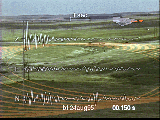 ANALYSIS OF MINING EXPLOSION PERFORMANCE WITH MULTIPLE SENSOR DATA AND PHYSICAL MODELS
ANALYSIS OF MINING EXPLOSION PERFORMANCE WITH MULTIPLE SENSOR DATA AND PHYSICAL MODELS
Online CDROM (564 Meg) in HTML format which surveys work done at Southern Methodist
University and the Los Alamos National Laboaratory on combining video, seismographic, and
infrasound data of mining blasts. The paper is arranged in three chapters and
includes gif and jpeg images as well as links to mpeg and quicktime
movies of mining blasts combined with synthetic computer models. This paper
is also available (without movies) as a 16 Mb
Adobe PDF document
and in Adobe PDF format with movies included in mpeg format as a 113 Mb
gzip'd Unix tar archive
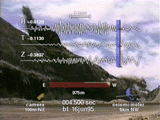 Seismicity of Industrial Mining Explosions
Seismicity of Industrial Mining Explosions
Computer models with seismic and video data; HTML Documents with mpeg movies.
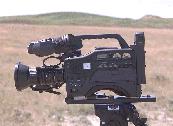 Synchronization of Video with Seismic and Acoustic Data using GPS
Synchronization of Video with Seismic and Acoustic Data using GPS
A technique for recording GPS timing signals on video tape for correlation with seismic and acoustic data sets. This paper is also available as an
MS Word Document (1.5 Meg).

Papers
Adobe Acrobat PDF format
Click on the thumbnails to view first page as a jpeg image.
 Ground Truth (1.5M)
Ground Truth (1.5M)
Detection, location and identification of mining explosions using regional seismic and acoustic observations can minimize the number of false alarms that might arise as a result of monitoring of the Comprehensive Nuclear Test Ban Treaty. The preliminary work described in this document is intended to illustrate one way in which information about blasting provided by a mine operator may be useful in improving monitoring functions.
 Harris Building Demolition (8.5M)
Harris Building Demolition (8.5M)
On February 18, 2000, Edward Jakubowski suggested that there could be an opportunity for SMU to record the acoustic and seismic events associated with the explosive demolition on February 20 of the building at 800 Fifth Avenue in Fort Worth, near the Harris Methodist Hospital (Figure 1). This would provide an opportunity for SMU to test its sensors and practices related to the upcoming near-source mine deployments. Although this was short notice relative to normal SMU deployment practices, it was too interesting not to record.
 Source Scaling with Single-Fired and Delay-fired Explosions (1.7M)
Source Scaling with Single-Fired and Delay-fired Explosions (1.7M)
This work quantifies seismic coupling as a function of charge weight for single-fired (simultaneously detonated) explosions observed in the mine and at regional distances. These single-fired explosions are contrasted to standard production shots from the same mine.
 Correlating Multi-Phenomenology Measurements with Blast Design (3.4M)
Correlating Multi-Phenomenology Measurements with Blast Design (3.4M)
Blasting operations at one copper mine are studied in detail to examine the relation between blast design parameters and near-shot, in-mine, and regional seismic and acoustic observations. Five observational experiments, namely collection of blast design data, near source recordings, GPS synchronized video, near mine recordings and distant regional observations were performed during one week in August.
 The Role of Ground Truth in Improved Identification of Mining Explosion Signals (2.7M)
The Role of Ground Truth in Improved Identification of Mining Explosion Signals (2.7M)
The characterization and identification of small magnitude seismic sources using regional observations involves the analysis of signals from natural and man made sources. Proper event classification will depend upon the appropriate assessment of source and propagation path effects. Our work is intended to investigate supplementary procedures and data sets that can improve source characterization procedures. Several approaches to improved source identification procedures have been investigated including: (1) Execution of contained calibration explosions; (2) Utilization of regional array data for improved separation of source and propagation path effects; (3) Development of in-mine ground truth through mine records or on site instrumentation; (4) Combining seismic and infrasound data for source characterization.
 Utilization of Seismic and Infrasound Signals for Characterization of Mining Explosions (590k)
Utilization of Seismic and Infrasound Signals for Characterization of Mining Explosions (590k)
This empirical study is designed to quantify mining explosions as sources of seismic and infrasound signals. The study focuses on the Western US, where a variety of different types of mining operations exist, ranging from surface coal cast blasting to hard rock fragmentation blasting in porphyry copper mines. The study is extended to the taconite mines of the Mesabi Range of Minnesota. Newly installed instrumentation, including in-mine equipment for ground truth as well as regional seismo-acoustic deployments to complement existing resources in the region, is a key component of the study. In-mine monitoring is ongoing at the Morenci Mine in Arizona and the Tyrone Mine in New Mexico. The seismo-acoustic station at Ft. Hancock, Texas, and the infrasound upgrade to Tucson, Arizona, and WUAZ will also be illustrated.

Posters
Adobe Acrobat PDF format
 Poster_AGU_2001_Zhou (711k)
Poster_AGU_2001_Zhou (711k)
Upper Crustal Shear Structure of North East Wyoming, Inverted by Regional Surface Waves from Mining Explosions: Comparisons of Niching Genetic Algorithms and Least-Squares Inversion.
 Poster_AGU_FALL01_stump (20M)
Poster_AGU_FALL01_stump (20M)
Linking Regional Seismic and Infrasound Observations to mining Practices
 Poster_AGU_SPRINGO1 (13M)
Poster_AGU_SPRINGO1 (13M)
The Characterization of Seismic and Infrasound Signals from Mining Explosions
 Poster_ISEE2002 (3.2M)
Poster_ISEE2002 (3.2M)
Correlating Multi-Phenomenology Measurments with Blast Design in a Copper Mine.
 Poster_SRS_Oct01 (42M)
Poster_SRS_Oct01 (42M)
Linking Regional Seismic and Infrasound Observations to Mining Practices
 Poster_SRS_Sept00 (5.6M)
Poster_SRS_Sept00 (5.6M)
Western United States Seismo-Acoustic Network
 Poster_SSA_2001_Zhou (5.1M)
Poster_SSA_2001_Zhou (5.1M)
Resolution of Shallow Shear Structure Using Regional Surface Waves from Mining Explosions and Genetic Algorithms
 Poster_WUAZ_Install (11M)
Poster_WUAZ_Install (11M)
Why We Study Infrasound

Presentations
Adobe Acrobat PDF files
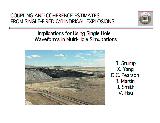 Coupling and Coherence Estimates from Single-fired Cylindrical Explosions (6.9M)
Coupling and Coherence Estimates from Single-fired Cylindrical Explosions (6.9M)
 Improved Identification of Mining Explostion Signals (19M)
Improved Identification of Mining Explostion Signals (19M)
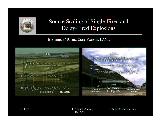 Source Scaling of Single-fired and Delay-fired Explosions (3.1M)
Source Scaling of Single-fired and Delay-fired Explosions (3.1M)
 Spatial Variability of Noise and Signals (5.5M)
Spatial Variability of Noise and Signals (5.5M)

Last update 21 January 2003 dpa


 ANALYSIS OF MINING EXPLOSION PERFORMANCE WITH MULTIPLE SENSOR DATA AND PHYSICAL MODELS
ANALYSIS OF MINING EXPLOSION PERFORMANCE WITH MULTIPLE SENSOR DATA AND PHYSICAL MODELS
 Seismicity of Industrial Mining Explosions
Seismicity of Industrial Mining Explosions
 Synchronization of Video with Seismic and Acoustic Data using GPS
Synchronization of Video with Seismic and Acoustic Data using GPS

 Ground Truth (1.5M)
Ground Truth (1.5M) Harris Building Demolition (8.5M)
Harris Building Demolition (8.5M) Source Scaling with Single-Fired and Delay-fired Explosions (1.7M)
Source Scaling with Single-Fired and Delay-fired Explosions (1.7M) Correlating Multi-Phenomenology Measurements with Blast Design (3.4M)
Correlating Multi-Phenomenology Measurements with Blast Design (3.4M) The Role of Ground Truth in Improved Identification of Mining Explosion Signals (2.7M)
The Role of Ground Truth in Improved Identification of Mining Explosion Signals (2.7M) Utilization of Seismic and Infrasound Signals for Characterization of Mining Explosions (590k)
Utilization of Seismic and Infrasound Signals for Characterization of Mining Explosions (590k)
 Poster_AGU_2001_Zhou (711k)
Poster_AGU_2001_Zhou (711k) Poster_AGU_FALL01_stump (20M)
Poster_AGU_FALL01_stump (20M)  Poster_AGU_SPRINGO1 (13M)
Poster_AGU_SPRINGO1 (13M) Poster_ISEE2002 (3.2M)
Poster_ISEE2002 (3.2M) Poster_SRS_Oct01 (42M)
Poster_SRS_Oct01 (42M) Poster_SRS_Sept00 (5.6M)
Poster_SRS_Sept00 (5.6M) Poster_SSA_2001_Zhou (5.1M)
Poster_SSA_2001_Zhou (5.1M) Poster_WUAZ_Install (11M)
Poster_WUAZ_Install (11M)
 Coupling and Coherence Estimates from Single-fired Cylindrical Explosions (6.9M)
Coupling and Coherence Estimates from Single-fired Cylindrical Explosions (6.9M) Improved Identification of Mining Explostion Signals (19M)
Improved Identification of Mining Explostion Signals (19M) Source Scaling of Single-fired and Delay-fired Explosions (3.1M)
Source Scaling of Single-fired and Delay-fired Explosions (3.1M) Spatial Variability of Noise and Signals (5.5M)
Spatial Variability of Noise and Signals (5.5M)